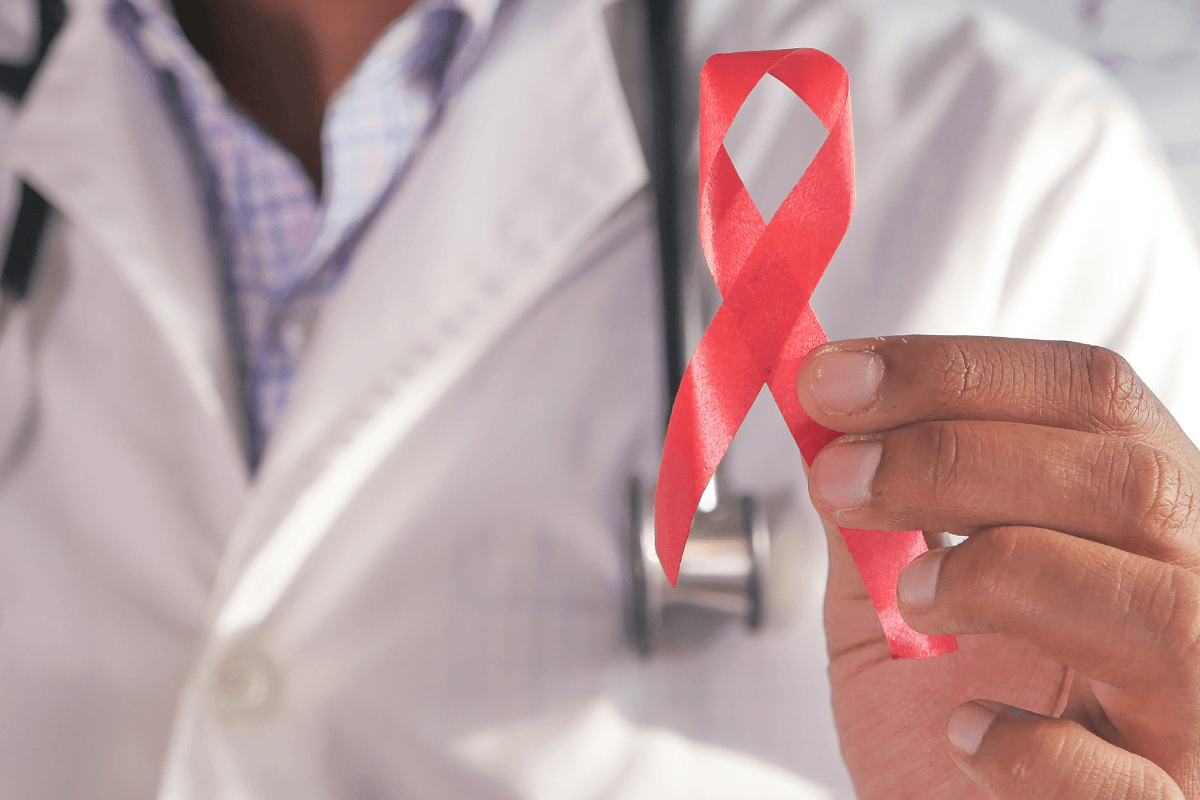Key Takeaways
- Awareness efforts can support earlier evaluation and better support.
- Blood cancers include leukemia, lymphoma, and multiple myeloma.
- Persistent symptoms deserve attention, but often have benign causes.
- Support can be practical, emotional, and advocacy-focused.
- Ribbons and events work best when they’re accurate and respectful.
Blood Cancer Awareness Month can be a moment to pause and regroup. It often brings up questions about symptoms, testing, and how to help. It can also feel personal if someone close is affected.
You’ll find clear, calm explanations of blood cancers and common warning signs. You’ll also learn simple ways to show support and spread accurate awareness. The goal is informed action, not fear.
Blood Cancer Awareness Month 2025: What It Means and Why It Matters
Awareness months are about visibility, education, and support. They can help people recognize persistent changes and seek evaluation sooner. They also create space to talk about treatment, caregiving, and life after therapy.
In 2025, many campaigns focus on access, understanding, and community. That includes listening to people living with cancer and their caregivers. It also means sharing trustworthy information, including what symptoms may signal, and what they often do not.
Participation does not need to be big to matter. A small workplace conversation can reduce stigma and misinformation. A fundraiser, walk, or story-sharing post may also connect someone to help.
What Blood Cancers Are and How They’re Detected
Blood cancers start in the bone marrow or immune system cells. They can affect how red cells, white cells, or platelets are made and work. The main groups are leukemia, lymphoma, and multiple myeloma.
The phrase what is blood cancer usually points to one core idea. These conditions involve abnormal blood-forming or immune cells that crowd out healthy ones. For plain-language definitions and treatment overviews, see the National Cancer Institute pages on hematologic cancers.
Symptoms can be vague at first. Fatigue, frequent infections, or easy bruising can have many explanations. Still, ongoing changes are worth discussing with a clinician, especially if they persist.
Common tests your clinician may order
A basic starting point is often a complete blood count (CBC). It measures red cells, white cells, and platelets. Clinicians may also review a peripheral smear, which looks at cell shapes. If results raise concern, next steps may include imaging, lymph node or bone marrow biopsy, and specialized lab tests. These can include flow cytometry (cell-marker testing) and genetics testing that helps classify the disease. Classification matters because it can shape treatment options and monitoring.
Leukemia: Early Signs and Next Steps
Leukemia involves abnormal white blood cells, often starting in bone marrow. It can be acute (faster-growing) or chronic (slower-growing). Symptoms may vary based on the type and how advanced it is.
People may notice infections that are harder to shake, unusual bruising, or bleeding gums. Some develop night sweats, fever without a clear cause, or shortness of breath. The early signs of leukemia can also look like common viral illness or anemia, so context and persistence matter.
It is reasonable to seek timely care for severe symptoms. Concerning signs include fainting, chest pain, new confusion, or uncontrolled bleeding. For less urgent symptoms, tracking what changes and how long they last can help the visit feel more productive.
Lymphoma: Swollen Nodes, Fevers, and Testing
Lymphoma affects lymphocytes, a type of immune cell. It can develop in lymph nodes, the spleen, or other tissues. Broadly, it includes Hodgkin and non-Hodgkin lymphoma.
Common lymphoma symptoms can include a painless lump in the neck, armpit, or groin. Some people notice drenching night sweats, persistent itching, or unexplained weight changes. Swollen nodes are often due to infection, so clinicians look at size, duration, and associated symptoms.
Evaluation may include blood tests and imaging such as ultrasound or CT. A biopsy is often needed to confirm lymphoma and determine the subtype. Subtyping guides next steps, including whether treatment is needed right away.
Multiple Myeloma: Bone Pain, Kidneys, and Fatigue
Multiple myeloma is a cancer of plasma cells, which make antibodies. It often involves bone marrow and can affect bones, kidneys, and blood counts. Some people are diagnosed after routine lab work shows anemia or high protein.
Typical multiple myeloma symptoms include ongoing bone pain, especially in the back or ribs. Fatigue can be significant and may relate to anemia. Other concerns can include frequent infections or signs of kidney strain, which clinicians evaluate with blood and urine tests.
Testing may include serum protein electrophoresis (SPEP), free light chains, and urine studies. Imaging can look for bone changes, and bone marrow testing can confirm the diagnosis. Some people have precursor conditions like MGUS, which require monitoring rather than immediate therapy.
Treatment Paths for Blood Cancers: From Chemo to Targeted Therapy
Treatment depends on the specific diagnosis, subtype, and overall health. Some blood cancers need urgent treatment, while others are monitored at first. Many plans combine approaches over time.
Common tools include chemotherapy, radiation in select cases, and immunotherapy. Targeted therapies act on specific pathways in cancer cells, which may reduce harm to healthy cells. For one example of how a targeted medicine is used in chronic myeloid leukemia, read How Bosulif Treats CML for an example of targeted therapy basics.
Some people may be candidates for stem cell transplant (also called bone marrow transplant). Newer options may include CAR T-cell therapy in certain settings. For a plain-language look at an antibody-based approach in myeloma, see Darzalex Injection to understand a common myeloma antibody therapy.
Supportive care is part of treatment, not an add-on. It may address nausea, infection risk, anemia, sleep, and emotional strain. If you want broader context on cancer medicines people may hear about, the Cancer Medication Options page helps compare medicine classes your clinician may mention.
Blood Cancer Awareness Ribbon: What It Represents
Symbols can help people feel seen and supported. They can also open conversations that might otherwise feel awkward. That matters for families, workplaces, and community groups.
The blood cancer awareness ribbon is often used as a general sign of support. Different organizations may use different colors for specific diseases. Using the symbol with a short educational message can keep the focus on learning, not assumptions.
Note: Not everyone wants public attention around their diagnosis. It helps to ask what kind of visibility feels supportive. When in doubt, center the person’s preferences and privacy.
Choosing a Blood Cancer Awareness Ribbon Color for Events
Event planning is easier when the message is specific. Decide whether the focus is general blood cancers or one condition. That choice can shape graphics, speakers, and suggested resources.
Blood cancer awareness ribbon color is commonly shown as red in many campaigns. Some communities also use orange for leukemia, lime green for lymphoma, and burgundy for myeloma. Because color use can vary by organizer and country, confirm the choice with the group you are representing.
Tip: Add a one-line caption to posters and social posts. Naming the condition reduces confusion and keeps education front and center.
If your event includes printable materials, keep them readable and inclusive. Use plain language, large fonts, and a few trusted resources. For more awareness examples across age groups, read Childhood Cancer Awareness Month for family-friendly ways to start conversations with kids.
World Blood Cancer Day 2025 and Other Awareness Dates
Awareness is stronger when it continues throughout the year. A calendar of touchpoints can help groups plan events that feel manageable. It can also reduce “awareness fatigue” by spacing efforts out.
World Blood Cancer Day 2025 is observed globally on May 28. It is often linked with donor registry education and stories from patients and donors. For the official date background and campaign materials, see DKMS campaign details in a short, neutral summary.
Other widely recognized moments include the global cancer awareness day in early February and national or local cancer control campaigns. If you’re looking for community-level actions that go beyond individual events, read National Cancer Control Month for community and policy actions you can take this month.
Support That Helps: For Patients, Caregivers, and Friends
Support looks different at each stage of illness and recovery. Some people want company at visits, while others prefer quiet help at home. The most helpful starting point is often a simple, specific offer.
Try practical support first. Offer rides, a meal schedule, child care coverage, or help with paperwork. For emotional support, check in without demanding updates, and accept “not today” as a complete answer.
It can also help to understand treatment logistics. Many therapies involve cycles of appointments and lab checks. Energy can change week to week, so flexible plans matter more than perfect plans.
Some people ask how to help through donation. Blood donation rules depend on health history and local eligibility criteria. For bone marrow and stem cell donation basics, the NMDP donation process overview explains matching and common steps in plain language.
There is also a role for long-term health advocacy. That can include sharing credible prevention information and reducing stigma around screening and follow-up. If you want everyday habits that support overall health, see How To Prevent Cancer for everyday risk-reduction habits that support overall health.
Research headlines can be confusing, especially around common medicines. If you’re sorting through news about diabetes drugs and cancer risk, Metformin Potential Use offers context on research links and uncertainty.
For ongoing learning across many cancer topics, the Cancer Articles page can help you keep learning at your own pace. Reading broadly can also make it easier to support someone without jumping to conclusions.
Recap
Awareness efforts work best when they are accurate and kind. Learn the basic differences between leukemia, lymphoma, and myeloma, and keep symptoms in perspective. Many signs have non-cancer causes, but persistence deserves attention.
Support can be as simple as showing up consistently. Pair symbols and events with clear education and respect for privacy. For personal concerns, a clinician can help interpret symptoms and next steps.
This content is for informational purposes only and is not a substitute for professional medical advice for your personal situation.

